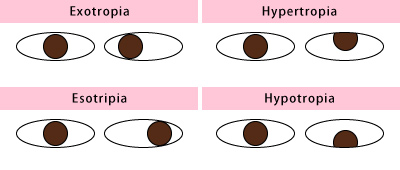
Strabismus is a deviation of the eyes. The term is used to describe eyes that are not straight or properly aligned.
Strabismus is caused by an imbalance in the muscles that control the positioning of the eye. Symptoms include misalignment of the eyes, double vision, and eye muscle paralysis. The diagnosis is based on an eye examination. Strabismus sometimes resolves on its own, but in most cases, eyeglasses, eye drops, or surgery is needed.
The appropriate treatment for strabismus is dependent on several factors including the patient's age, the cause of the problem, and the type and degree of the eye turn. Treatment may include patching, corrective glasses, prisms, or surgery. With patching, the better eye is covered, forcing the child to use the weaker eye. Over time, the brain adjusts to using the weaker eye and vision gradually improves. For this treatment to be effective, it must be done at a young age before the child can develop amblyopia.
Surgery is sometimes performed for both adults and children to straighten a crossed eye. The procedure may be done with local or general anesthesia. There are several different surgical techniques used to correct strabismus. The appropriate one is dependent on the muscle involved and the degree of the eye turn.



